Black Dolls: A Break From Discrimination
Cindy García created the interview questions and sent them to Maritza Arango Montalvo to use to interview Esperanza Guillot Ramos in person. Maritza and Esperanza met in La Lisa in Havana Province in Cuba in May of 2024 to conduct and audio record the interview. Maritza sent the recording to Cindy who transcribed and translated it.
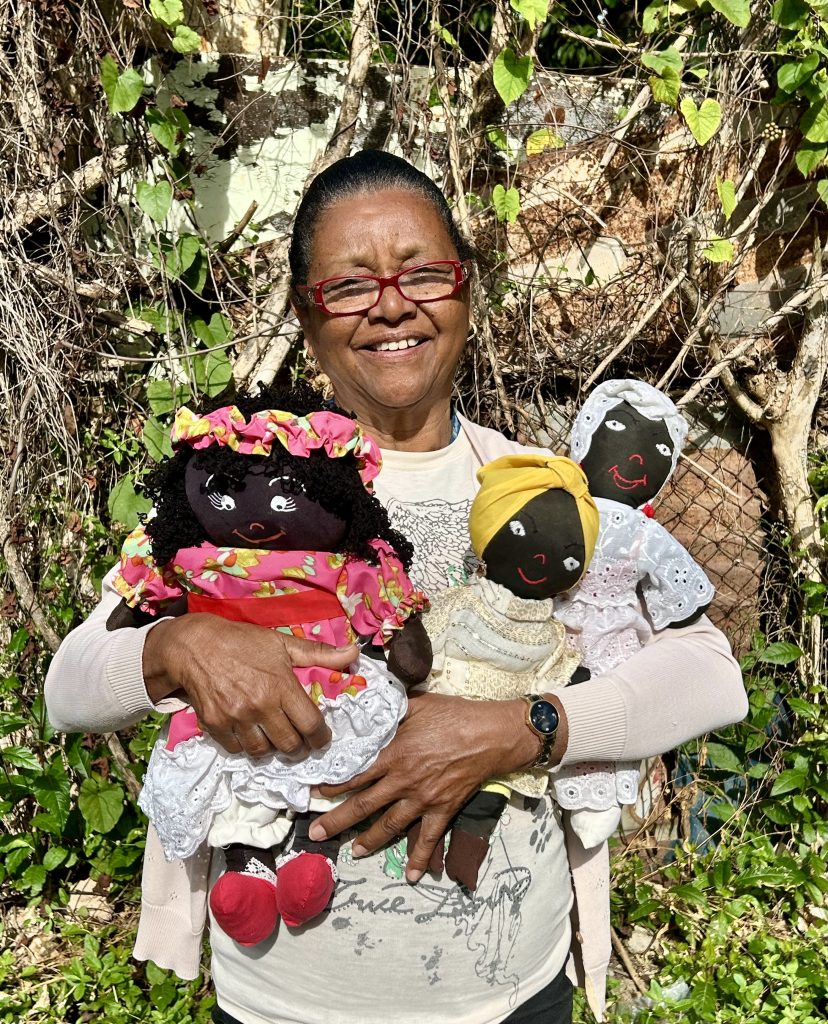
M: Tell me something about you, about your life.
E: My name is Esperanza Guillot Ramos.
I am married. I have two daughters, a granddaughter, and a grandson. Life has given me the opportunity to have two great-granddaughters.
I am a physical education teacher and I have been retired since 2009. Because I now have part of my time free, I dedicate it to this project, the making of Black dolls with El Proyecto La Muñeca Negra.
M: Why are the black dolls that you make important to you?
E: Black dolls are important because they represent a break from racial discrimination. Although attempts have been made to eliminate racism, it always remains intact, deeply rooted, very strong, and still marks us. Dolls are generally used by girls and boys in their play, though they only used to be for girls. Only very beautiful white dolls were manufactured and marketed as if there were no children of other races. Consequently, children learn from a young age that beauty, tenderness, affection, and love are only dedicated to white children, as if no other race existed. Therefore, they would believe that black girls and boys had no right to exist. They grow up with the image that white people are the only ones who can be pretty and beautiful.
And this is so. That even black children don’t know the value of their skin, and they think that their hair is inferior to the hair of white people.
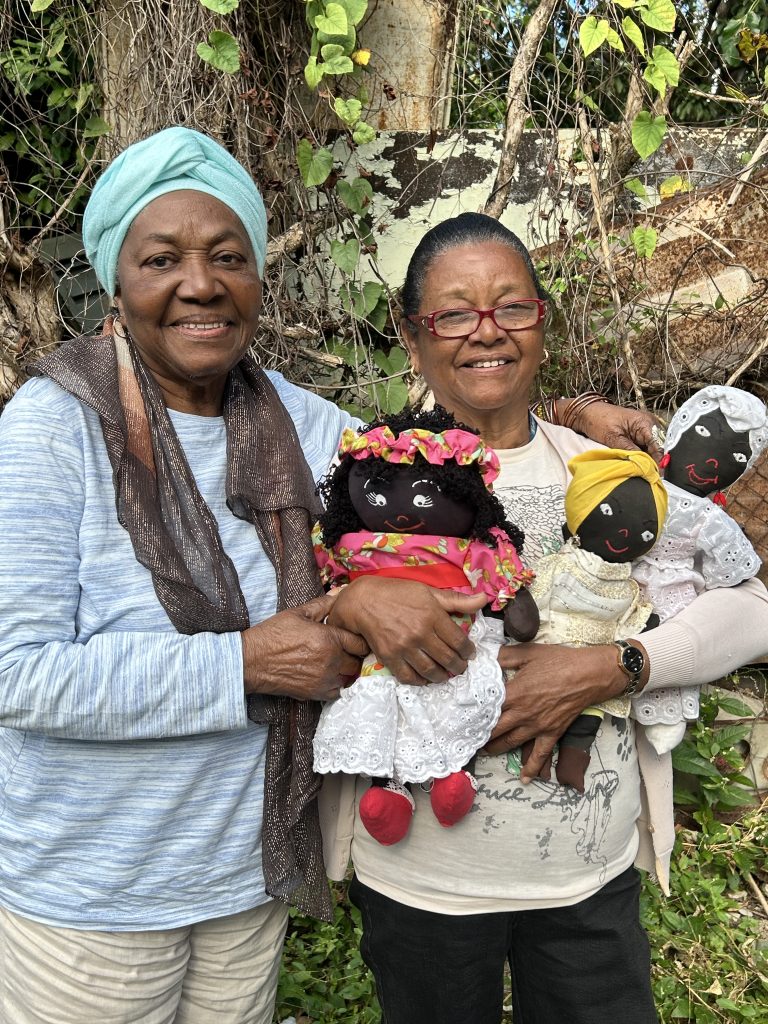
M: How did you become involved in making black dolls?
E: Little by little, I got involved in the manufacture of black dolls. Quite a while ago, I learned about the work of Margo [Margarita Montalvo], as we call her, the creator of the black doll project. The project uses some of the same items that in our households we throw away because they are no longer useful to us. And this is something that caught my attention. Among these things are egg shells, cardboard tubes where toilet paper is rolled up, old newspapers, cellophane from the coffee and castenilla, plastic water bottles, and so on. All the items that go directly to the trash could be used to make clothes, an item, a figure. That is something that amazed us, and so I got closer until one of the activities caught my attention. It was the making of the black dolls. That’s when I entered this path where Professor Margo, with all her patience, took me in the making of these dolls.
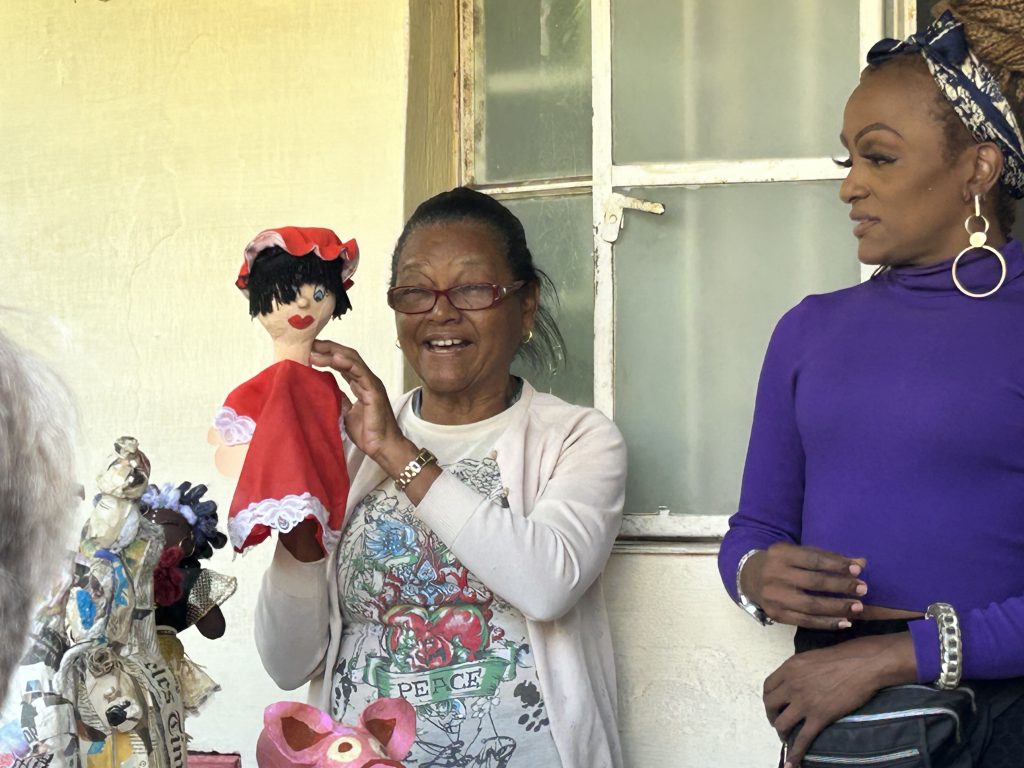
M: What inspired you to share your dolls with the group that day in February?
E: I was inspired by the interest and enthusiasm that the participants brought in learning about the work carried out by the project and especially the making of the black dolls. Black children internalize that they are inferior. That is why from an early age, just as there are white dolls, there must also be black ones and this will be the equality of all human beings.
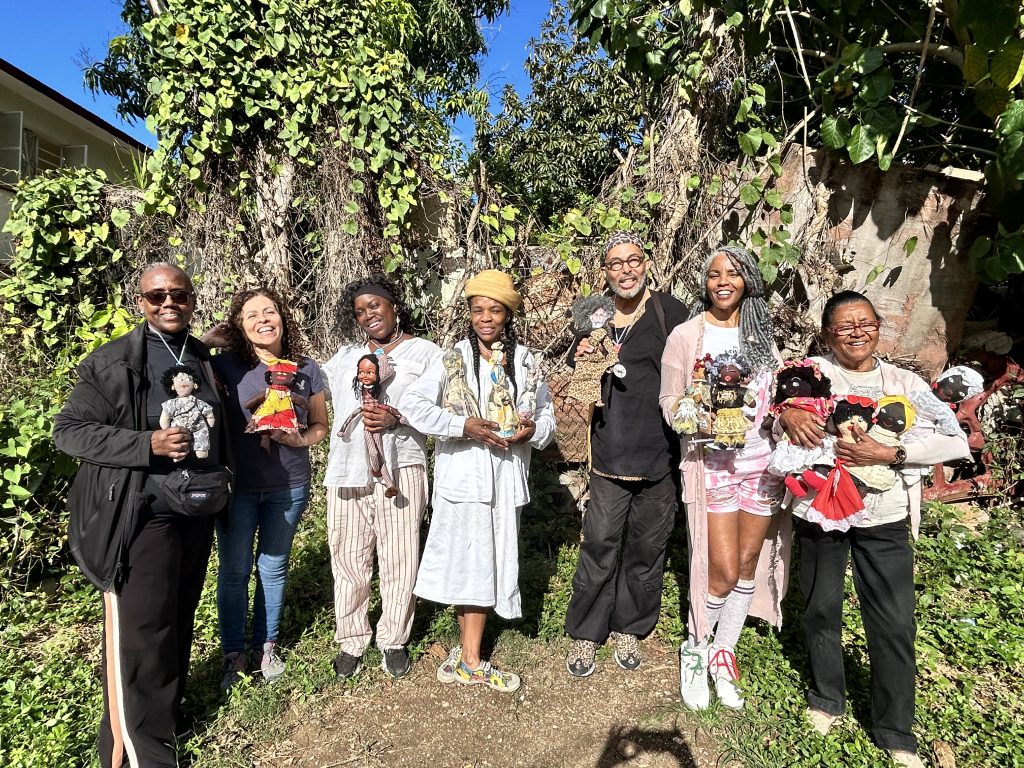
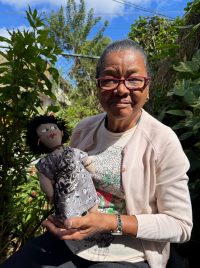
My name is Esperanza Guillot Ramos. I am Cuban, and I live in Havana, in the Municipality of La Lisa. I studied at the Escuela Superior de Educación Física, graduating in 1971. I worked in my profession for 37 years, retiring in 2009. Currently I am an active member of El Proyecto La Muñeca Negra where I dedicate myself to making dolls and other crafts. I am an entrepreneurial woman, a sister who opts for female empowerment, who works against discriminations of gender and skin color.
